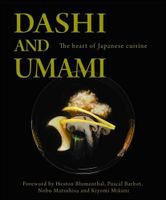Advertisement
Drying
An alternative to maturation is drying, which involves a little more effort as sunlight is often required, but the rewards are most satisfactory. All of the three main dashi ingredients undergo some form of drying. Kombu is dried in the sun to remove moisture and, consequently, the characteristic seaweed flavour and aroma that would otherwise impair the umami taste. It can then be matured, using the technique of kuragakoi (cellar conservation), to continue this process further. Shiitake mushrooms are dried, traditionally in the sun, and this process is known to increase the levels of guanylate that provide umami. By removing the moisture, disparate sections of the mushroom flesh come together, react, and cause larger compounds in the flesh to be broken down, producing guanylate, amongst other substances. The complex process by which katsuobushi is made also involves smoke-drying the simmered bonito. This essential step breaks down the proteins in the fish, yet again, releasing umami-providing amino acids and nucleotides.

